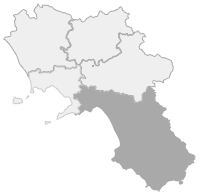The underground spring keeps to generously deliver it to the sea. Still freezing cold, as it emerges from the belly of the earth in the large cave, the fresh water mixes with the salty one, transferring its freshness. A natural phenomenon that makes that stretch of sea unique, protected by the bay framed by nature, also giving the name it shares with the other distinctive elements of the place: Infreschi.
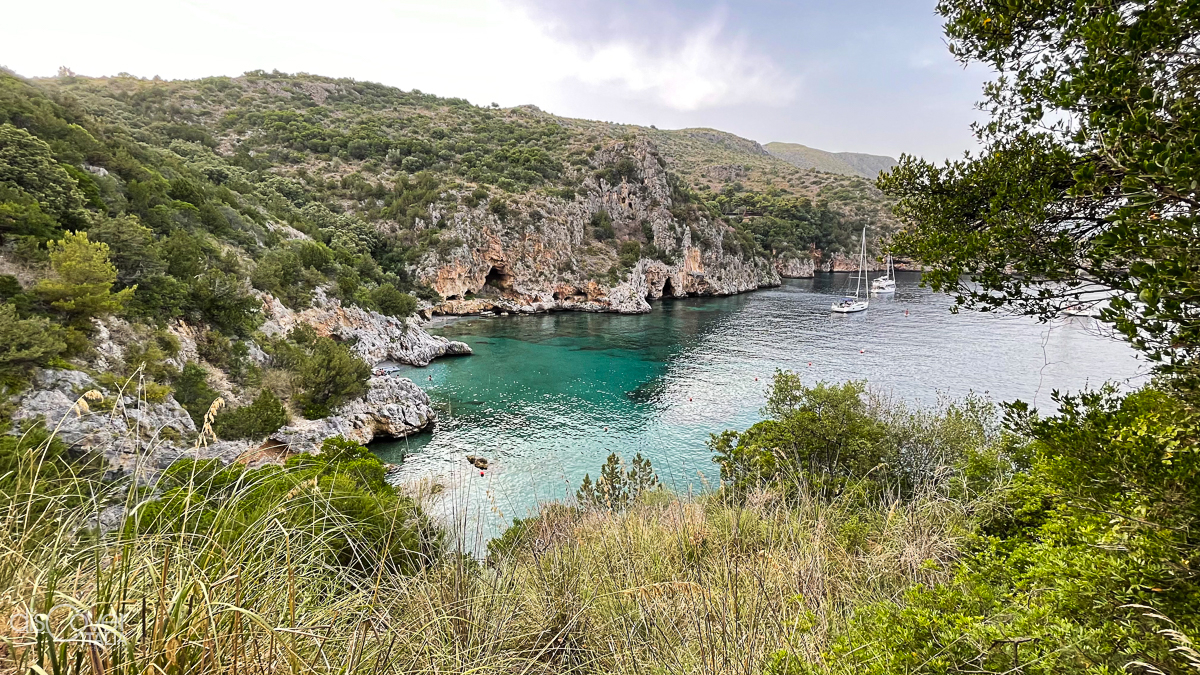 A piece of paradise well known to sailors of every epoch, who found in that bay a welcoming natural landing place and precious fresh water to continue their journey north. Like Aeneas, according to legend, and Roman ships, according to history. Right in the heart of the Protected Marine Area, second in the blue Cilento, smaller than the other located to the north, with its 2332 hectares of sea, corresponding to fourteen kilometers of coastline from the Tower of Zancale in the Municipality of Camerota in Punta Spinosa in the Municipality of San Giovanni in Piro. Established in 2009, like the other in the Gulf of Salerno, the Amp overlooking the Gulf of Policastro is also managed by the National Park of Cilento, Vallo di Diano and Alburni.
A piece of paradise well known to sailors of every epoch, who found in that bay a welcoming natural landing place and precious fresh water to continue their journey north. Like Aeneas, according to legend, and Roman ships, according to history. Right in the heart of the Protected Marine Area, second in the blue Cilento, smaller than the other located to the north, with its 2332 hectares of sea, corresponding to fourteen kilometers of coastline from the Tower of Zancale in the Municipality of Camerota in Punta Spinosa in the Municipality of San Giovanni in Piro. Established in 2009, like the other in the Gulf of Salerno, the Amp overlooking the Gulf of Policastro is also managed by the National Park of Cilento, Vallo di Diano and Alburni.
Together with the Marine Area ashore, stands a wild and unspoiled coast, made of high cliffs overlooking the sea. Also deserving of a special protection due to its rare naturalistic value, recognized by a Site of Community Interest. The calcareous nature of the pale rocks, with the typical erosion phenomena that accompany them, have created over time a harmonious alternation of small promontories, inlets with beaches of great beauty and bays, representing as many natural landings.
The caves
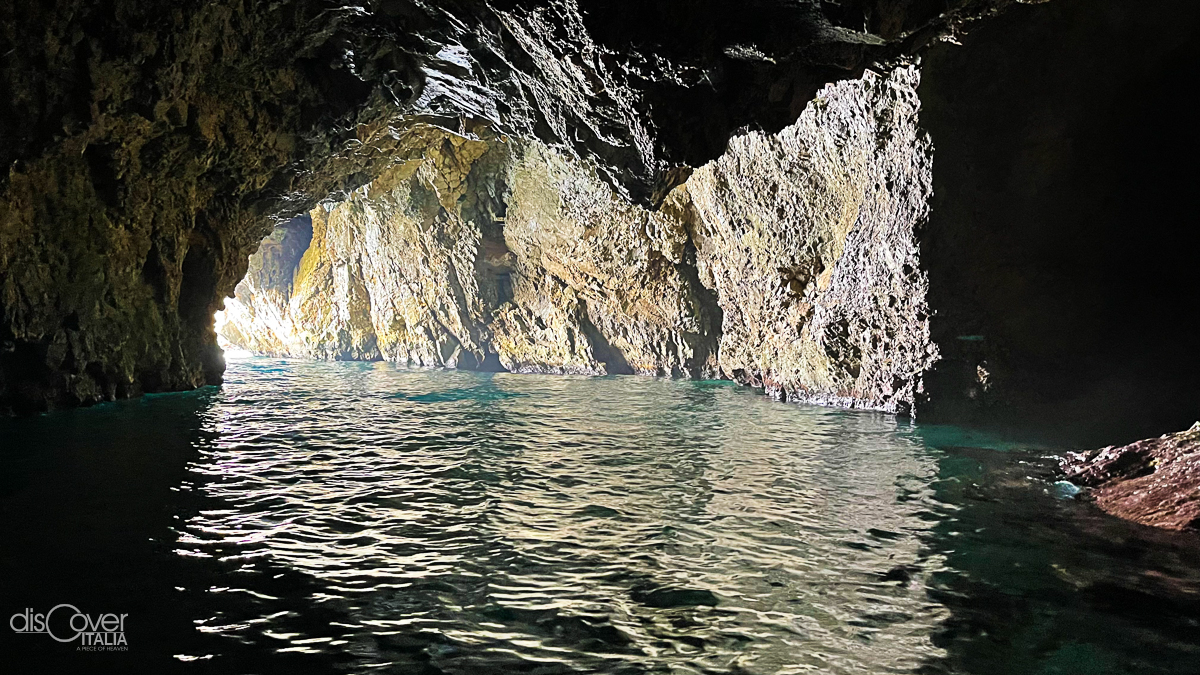
Another karst phenomenon that helps to recognize the landscape is the presence of numerous caves opening at sea level, partly submerged and accessible only by boat. The great Grotta degli Innamorati (“Lovers’ Grotto”) opens onto the Zancale promontory dominated by the quadrangular tower of the same name and the famous Alabaster Grotto loved by divers, which owes its name to the concretions of a mineral present in the large subaerial environment, accessed from a submerged entrance. And then, the Cathedral Grotto, the Blue Grotto of Camerota which in Cala Fortuna intercepts a ray of light from the sea drawing a bewitching blue color, the Grotta del Pozzallo with its beach, and the Grotto of the Noglio, characteristic for its skull shape and the large brown stalactites.
Caves used by man since prehistoric times, which have retained important traces of those frequentations: fireplaces, tools, animal bones and shells of molluscs and human bones belonging to Neanderthal man. Although some skulls found in 1960, due to some of their characteristics, suggested the discovery of an unknown species of hominid, which was given the name of homo camerotensis, a hypothesis canceled by further studies.
And with its famous spring of cold water, it’s impossible not to mention Grotta degli Infreschi. These freshwater springs in direct contact with the sea are another peculiarity of the Marine Protected Area, some of cold water, others of hot water, result of secondary volcanism, linked to the volcanic nature of the deeper layers of the evident carbonate rock. In addition to the source of the Infreschi, the Source of Santa Caterina, which flows from the rock emerging from the emerald sea, offers a glimpse of rare beauty.
And among the wonders of this uncontaminated habitat, how can we not highlight the natural pool of the Iscolelli?
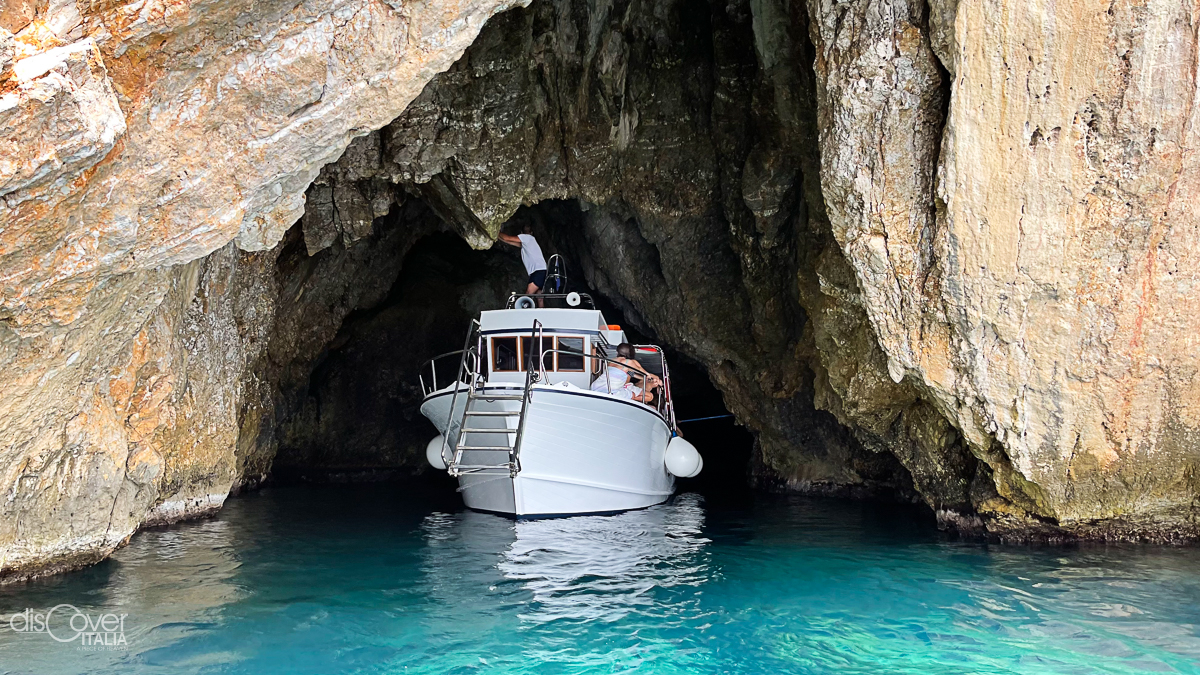
The areas of greater protection
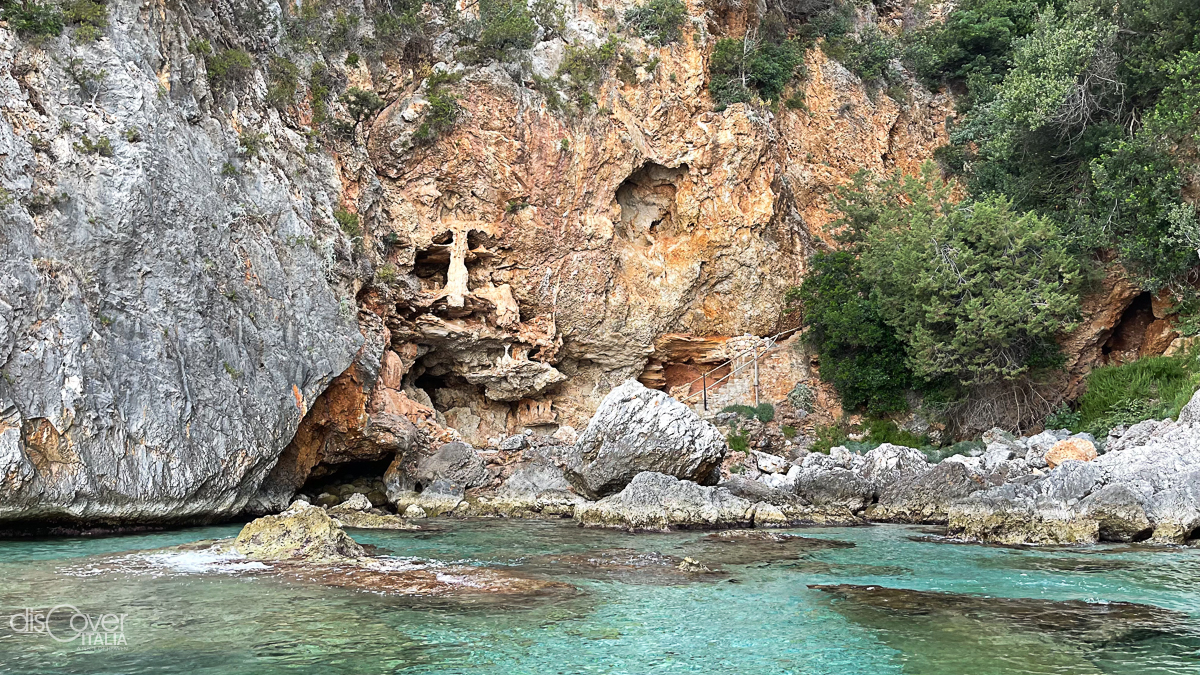
There is no Flysch in the seabed of this part of Cilento, where the calcareous nature of the sea cliffs gives life to coral beds rich in a great biological diversity: sponges, madrepores, gorgonians, melobesias, serpulas, bryozoans, ascidians, crustaceans and numerous varieties of fish.
It’s between the Tower of Cala Bianca and the Tower of Infreschi, including Punta Iscolelli or Punta Falconara at the northern limit of the Gulf of Policastro, that the zone A of integral reserve extends. A minimum portion of the Marine Area, just 32 hectares, but so "strategic" and valuable from a biological point of view, ensuring an effective "reserve effect" in the whole surrounding area. This is thanks to the extensive Posidonia prairie, home to many species.
Such as the rare molluscs Dizoniopsis micalii, Monophorus thiriotae, Raphitoma laviae, Parvioris ibizenca and the sea cow Discodoris atromaculata. And then bream, snapper, corvina, grouper and other fish species.
Not included in zone A, but due to the quality of its marine environment, corresponding to the Bay of the Infreschi with its cave, was considered worthy of a much stronger protection B+. In addition to the cave with its source, the vast Posidonia prairie deserves special protection, because, in the easternmost part of Porto Infreschi, still shows a significant presence of Pinna nobilis, the largest bivalve in the Mediterranean at risk of extinction, which is probably the surviving part of a much larger field of the so-called "Castanets". In that area, any activity is prohibited, including scuba diving, including accompanied diving. Bathing is allowed. It is no coincidence that the small beach of the Infreschi, absolutely delightful, has been crowned in recent years as the most beautiful in Italy.
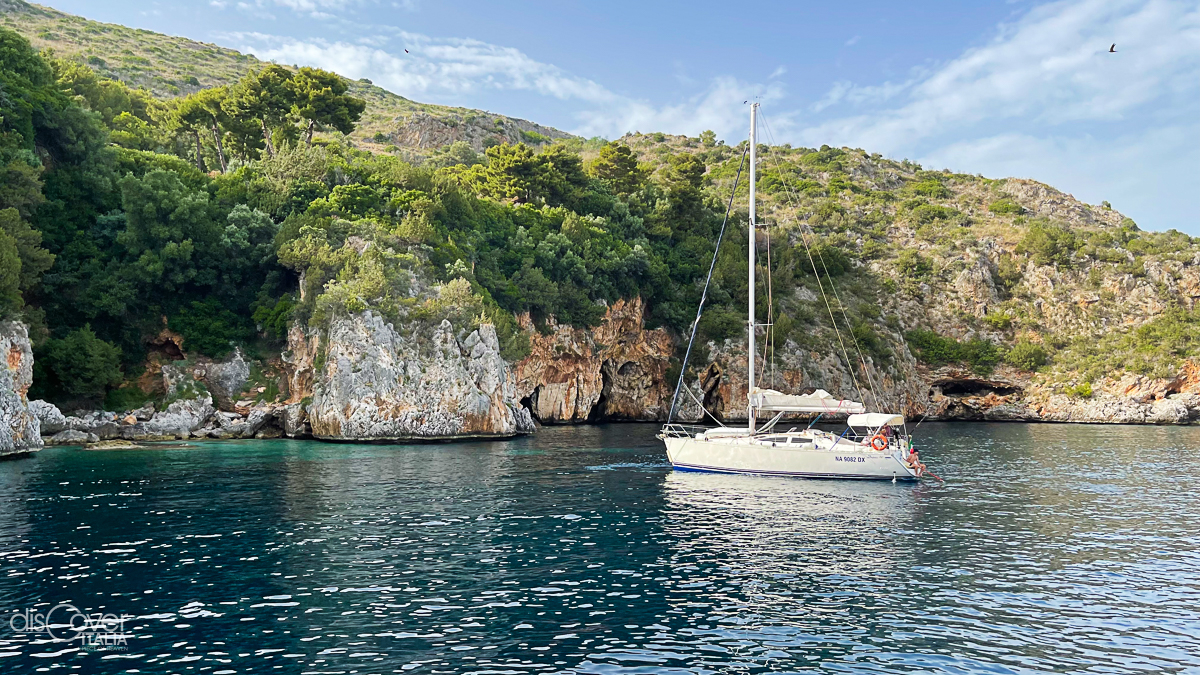
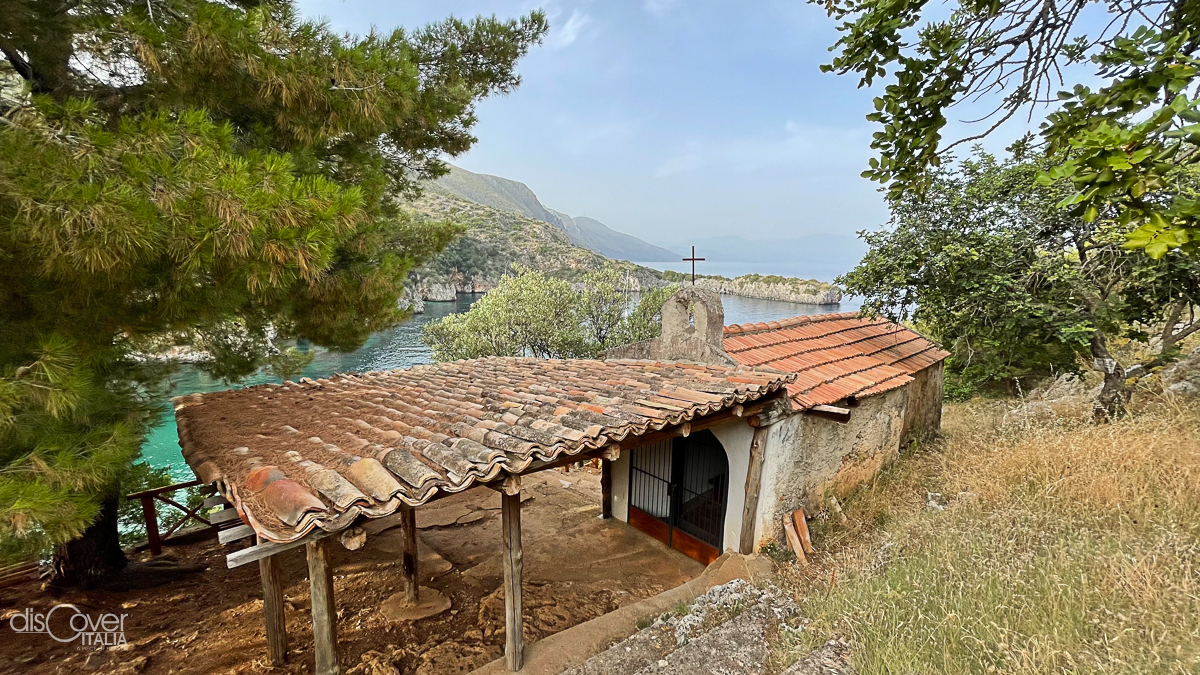 Coast of the Massetta
Coast of the Massetta
To the south of Baia degli Infreschi extends Masseta's coast, which also gives its name to the Marine Protected Area. A stretch of coast, extending up to port of Scario, characterized by magnificent white pebble beaches wedged among rocks covered by a rich vegetation of Mediterranean scrub and olive trees and crossed by ancient paths and mule tracks. The Marcellino beach, also known as the French beach, the Resima beach and the Gabbiani beach, can be reached from the crystal clear and transparent sea.
Other zones of the PMA
From Punta Zancale to Punta dell’Omo-Cala dell’Inferno extends the zone B of general reserve, surrounding the entire Zone A and extending beyond, incorporating zone B + too.
Even more external is the larger zone C of partial reserve, that protects the entire stretch of sea between Punta Zancale and Punta del Monaco.

Copyright video, foto e testi © 2020

